On April 9th, 1940, Hitler unleashed his forces on Norway and Denmark, hoping to preempt Allied moves into Scandinavia. The plan was to land troops in several strategic cities, using the warships of the Kriegsmarine as transports. The assumption was that the Norwegians would put up at most token resistance, allowing the Germans to get ashore easily, but this was dramatically disproved at Oslo. The force there, led by the heavy cruiser Blucher, managed to get past the outer defenses, but the commander of the inner defenses at Oscarsborg chose to fire, sinking the cruiser with his guns and torpedoes.
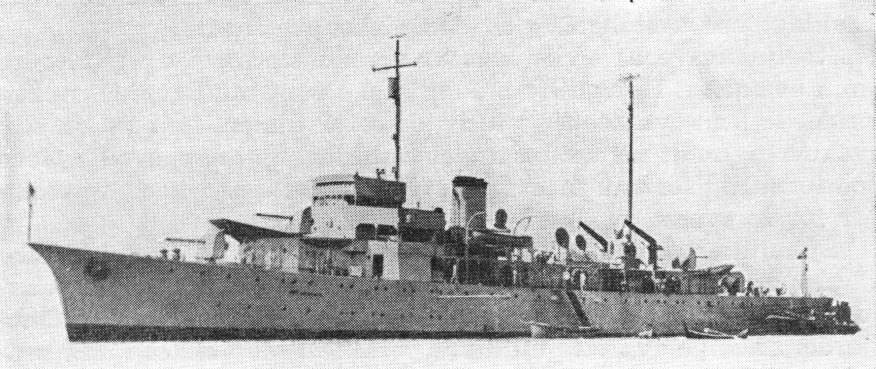
HNoMS Olav Tryggvason
But even as Blucher burned, ultimately rolling over and leaving much of the invasion force scattered on the shores of the Oslofjord, the other German ships continued to carry out their mission, some of them having split off before the main force reached the Drobak Narrows and Blucher fell victim to Oscarsborg. One of these was the detachment sent to seize the main naval base at Horten, in the outer reaches of the fjord. It was composed of two torpedo boats, Kondor and Albatros, fast minesweepers R17 and R21, and auxiliary Rau VII. Horten was the headquarters for the defense district protecting Oslo, but the guns intended to guard it were not manned, and its only real protection was the minelayer Olav Tryggvason, recently released from overhaul, and minesweeper Rauma. The German vanguard came in aboard the minesweepers as dawn was breaking, taking the Norwegians, who thought they'd have more warning from their ships patrolling offshore, by surprise. R17 managed to get all the way to the pier before Olav Tryggvason opened fire, the 70 or so men aboard her capturing a pair of Norwegian AA machine guns before the minelayer started pumping shells into the German ship. Three hits left her completely ablaze, and she sank when the fire reached her depth charges.
R21 swiftly turned aside, hiding behind a nearby island from the minelayer's fire, but Rauma pursued, damaging the German vessel. The R-boat fought back with her 20 mm cannons, which proved lethal at point-blank range, killing two of the Norwegians and badly damaging Rauma. The soldiers waded ashore, well away from the main naval base, while Albatros attempted to come in and help before being dissuaded by Olav Tryggvason's quartet of 120 mm guns. Kondor went to get help from the cruisers, now out of radio range, while Albatros stayed outside, firing blindly into the harbor. One pass took her a bit too close, and she took several hits from the minelayer. Shortly after, R-21 was seaworthy enough to make a break for freedom through shallow water where Olav Tryggvason couldn't follow, and the pair of hits the R-boat took were well above the waterline. The German ships had had enough, and withdrew.
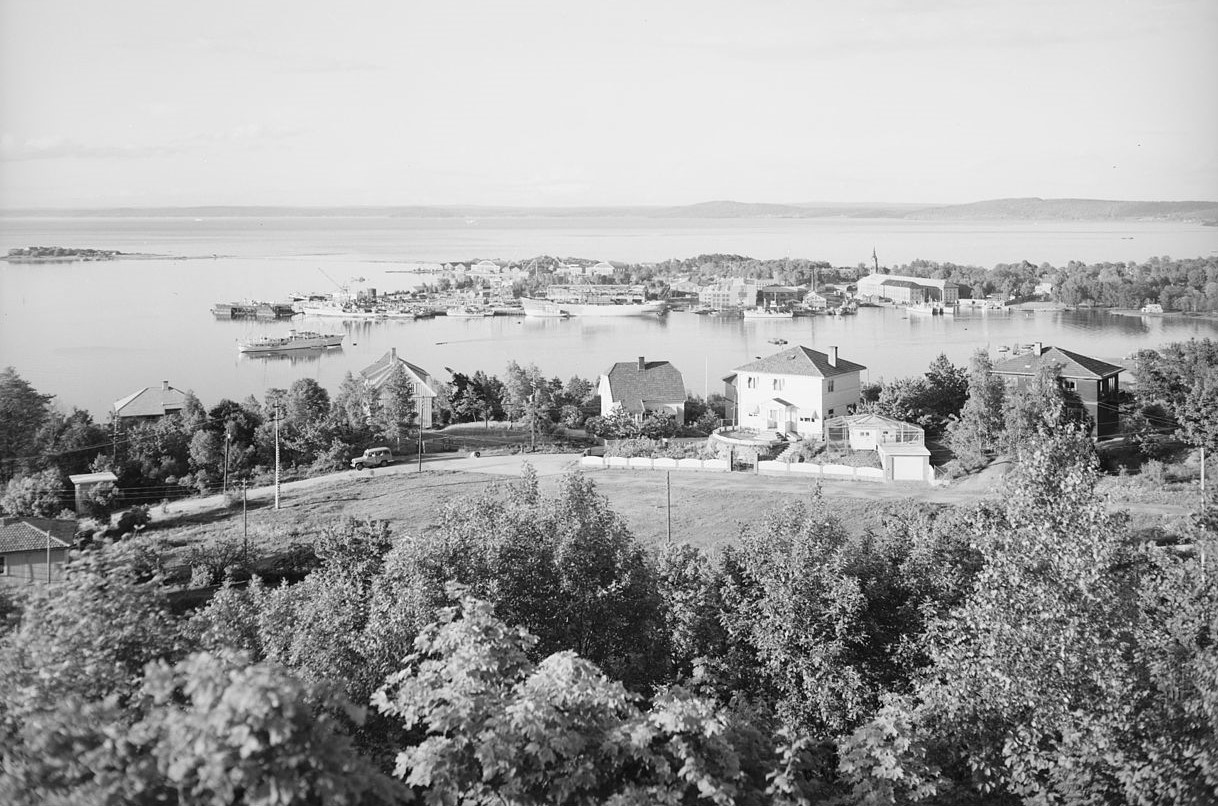
Horten Naval Base
Ashore, the Germans took up defensive positions, but the commander of the R-boat flotilla, who had been aboard R-17, decided on something a little more ambitious. Commandeering a car, he went to see the commander of the base at Horten, informing him that unless he surrendered, the Germans would begin air and naval bombardment of both the base and the nearby town. Helped by a phony radio call in which he pleaded for more time for negotiations, the bluff worked, and Horten was surrendered to a vastly outnumbered force of Germans, although the base commander specified that he wasn't going to surrender the other defenses of the Oslofjord. Unfortunately, a communications screwup meant that the surrender order was passed to the outer defenses, and the garrison on Rauoy Island also gave up before it was rescinded.
The surrender of Horten cut Birger Eriksen, the commander at Oscarsborg, off from higher command. But he wasn't the only one cut off, as the German commander had been aboard Blucher, and among the remaining ships, there was confusion. The captain of the light cruiser Emden was senior to that of the panzerschiffe Lutzow, but Lutzow’s captain had been placed in charge by radio signal from Blucher. Emden’s captain wasn't happy about this, and ignored orders to land his troops at Son, below the Drobak Narrows, and instead took his ship to Horten in an unsuccessful attempt to resolve the situation there. The Luftwaffe was asked to bomb Oscarsborg, and the Germans eventually sorted out their command issues and landed their troops at Son, 35 miles from Oslo.
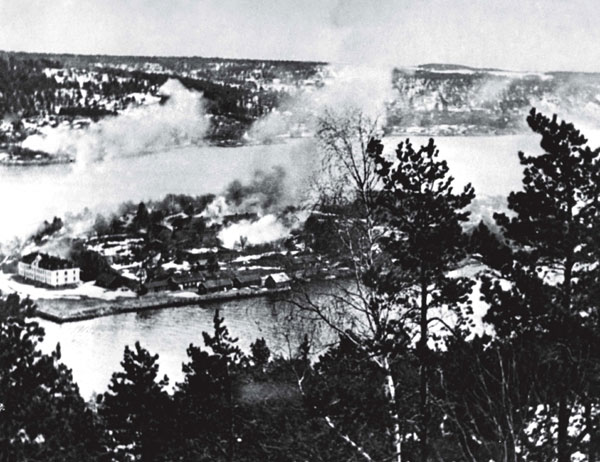
Oscarsborg under air attack
The Luftwaffe answered the call from Lutzow and sent a mix of He 111 level bombers and Ju 87 "Stuka" dive bombers to call on Eriksen's positions. The bombs were sufficient to drive the Norwegians from their positions and force them to take shelter in the tunnels under the fortress, but while some of the buildings were damaged, the great 28 cm guns remained intact. Shortly after 1300, a lull in the bombing led Lutzow to join in, firing 27 shells from her 28 cm guns, with little more effect. The bombardment allowed the Germans to run a captured steamer through the narrows, finally informing them of Blucher's fate. Eventually, the bombing slackened and Eriksen and his men emerged. The secondary battery at Kopas was ordered not to open fire without further orders, which were not forthcoming. This proved a mistake when torpedo boats Mowe and Kondor entered the Narrows, landing troops at the town of Drobak unopposed. These troops, about 50 strong, reached Kopas, and managed to bluff the commander there into surrendering his 300-man garrison without firing a shot at 1830.
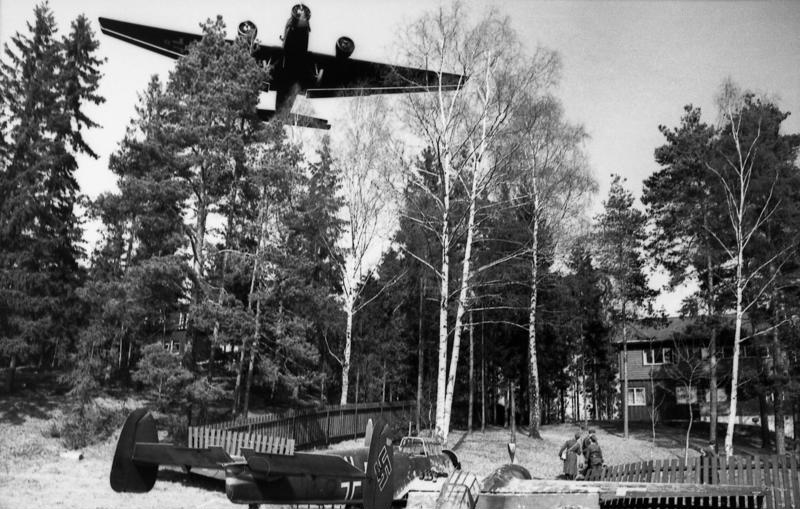
A Ju 52 lands at Fornebu, past a crashed Bf 110
While all of this was going on, the second prong of the German attack was being carried out. An airborne assault was planned on Fornebu Airport, west of the city center. After the paratroopers had secured the airport, more troops would be flown in, and fighters could begin to operate from it. Things went wrong almost immediately. Bad weather over the Skaggerak meant that the first wave of Ju 52s turned back, but the weather started to clear soon after and the second wave, intended to land at the secured airfield, pressed on. Cover for the jump was to be provided by eight Bf 110 fighters, which were surprised by the appearance of seven Norwegian Gloster Gladiator biplanes flying from Fornebu, and lost two of their number. The Gladiators then scattered, leaving the commander of the Bf 110s with a problem. The plan had been for the fighters to land at Fornebu after it was secured, as they lacked the fuel to make it back to Germany. After a Ju 52 was badly shot up by the handful of machine guns guarding the airfield, the decision was made to land the Bf 110s anyway. The first crashed, but the other aircraft made it down safely, and their crews quickly set up a perimeter. More Ju 52s of the second wave swiftly followed, and the Germans began to build up in strength, despite continued Norwegian presence near the airfield. At least 15 transports crashed due to a combination of ground fire and poor traffic control, but by mid-day, close to a regiment of troops had arrived.
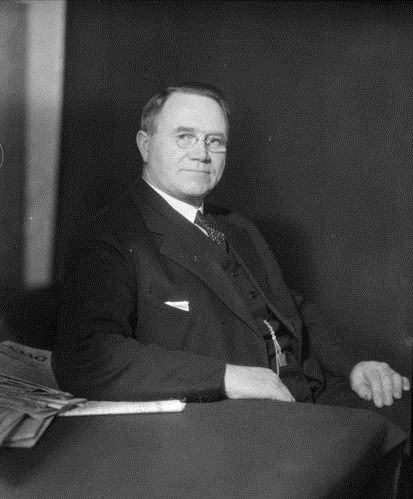
Johan Nygaardsvold
During the night, reports of warships offshore had begun to trickle in from around Norway, and the government had reconvened around midnight at the Foreign Office building. Despite the fact that the Germans had already opened fire, confusion still reigned, and for some reason Defense Minister Ljungberg passed orders for only a partial mobilization instead of the full and immediate mobilization that everyone else in the cabinet believed they had ordered. At 0430, the German Ambassador appeared, demanding to speak to Foreign Minister Koht. He presented a memorandum laying out the official reason for German intervention, and demanding that Norway accept. Koht took the matter to Prime Minister Nygaardsvold, who rejected the demands completely. Norway would fight, not as the actions of individual officers, but as a nation.
But even before the German ultimatum was presented, the threat to the capital was obvious, and the decision was made to evacuate the government to Hamar, 130 km to the north. A special train was laid on for 0700, and it left with King Haakon VII onboard, as well as several minsters and much of their staff. The Bank of Norway also ordered its gold reserves evacuated, with the trucks rolling out for Lillehammer just before dawn. The military headquarters also evacuated, although poor planning meant that there was little coordination before the 12th. Hamar soon became too dangerous, and decision was made to evacuate to the town of Elverum.
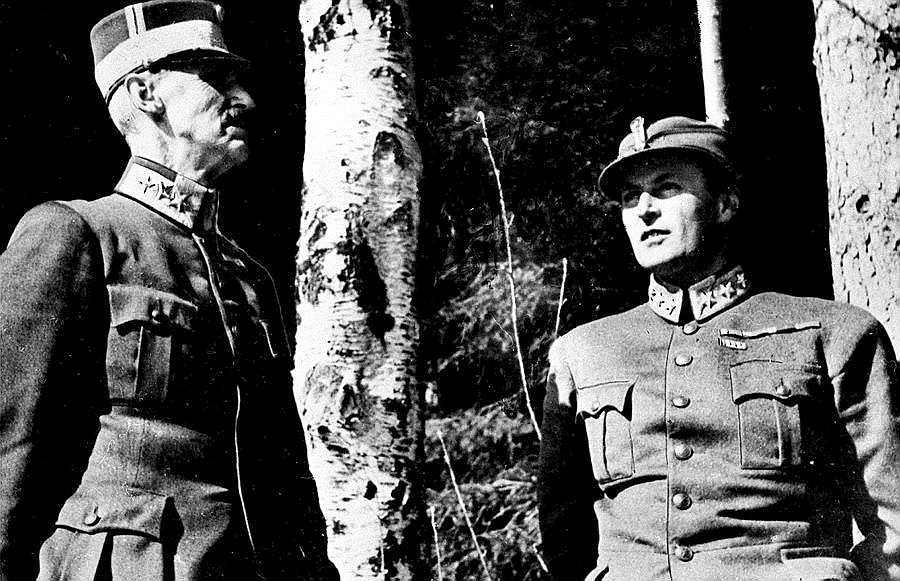
King Haakon VII and Crown Prince Olav during a bombing raid
Just after noon, a flight of Stukas bombed the Akershus Fortress in downtown Oslo. No one was killed, but the fortress was evacuated, opening the way for the Germans advancing from Fornebu. Shortly thereafter, the decision was made to surrender the city in an attempt to avoid civilian casualties. The Germans took possession of Oslo at 1400, but their main goal, to secure the country by capturing the government and the royal family, had failed comprehensively. Into the gap stepped Norwegian fascist Vidkun Quisling, who managed to convince the invaders that he should be allowed to announce the formation of a "national government" with him at its head. This was announced over the radio at 1932, throwing much of Norway into confusion. In Elverum, however, this merely hardened the government's will to resist, and Stortinget, the Norwegian Parliament, vested the Government with complete authority until Stortinget could meet again. This authorization would legitimize the Nygaardsvold Government even after it went into exile, dooming Quisling's attempts to establish his government as the rightful rulers of Norway. The death-blow to his ambition was delivered the next day, when King Haakon VII refused a German ultimatum to appoint Quisling Prime Minister, telling the actual government that he would abdicate instead, even if they agreed. Ultimately, nobody listened to Quisling, and a few days later, the Germans replaced him with their own direct government, reinstalling him as a figurehead in 1942.
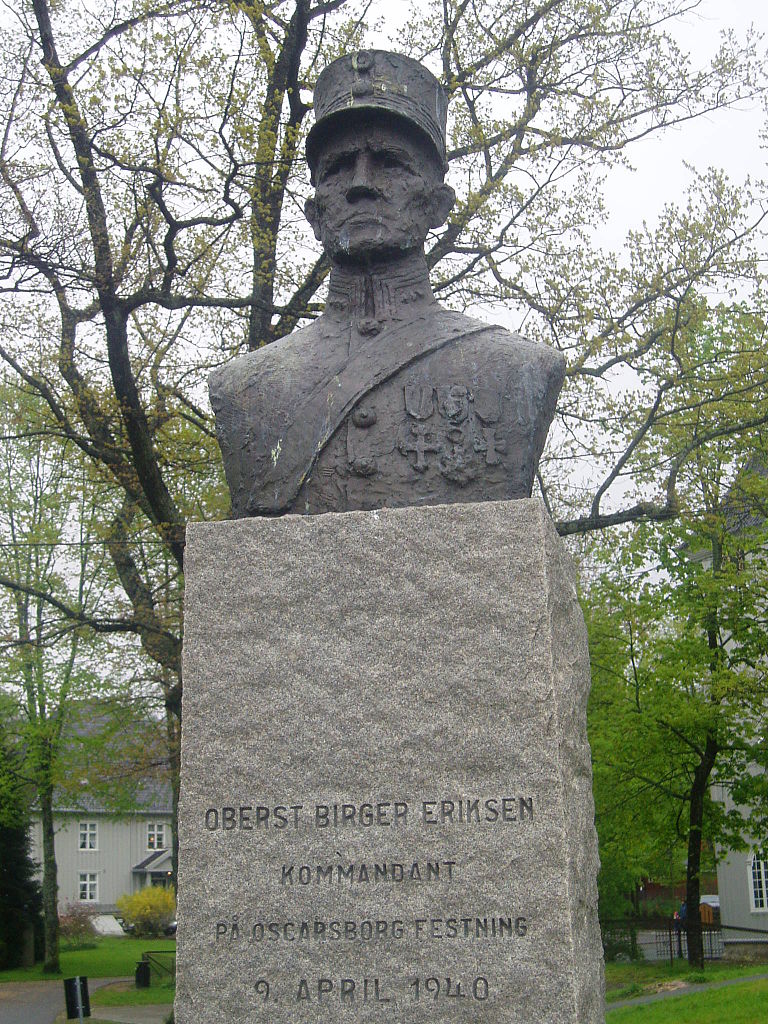
Back in Oscarsborg, Eriksen was cut off by events taking place to the north, and he soon was forced to give up as well. However, no formal surrender was signed, and the Norwegian flag flew next to the German on the morning of the 10th, as Lutzow and her consorts finally made it through the narrows, bound for Oslo. They tied up 30 hours behind schedule, and it wasn't until midday on the 10th that Bolaerne, one of the fortified islands in the outer Oslofjord, finally raised the white flag, allowing the Germans unimpeded access to the Norwegian capital. Astonishingly, two inquiries were made into Eriksen's surrender of Oscarsborg after the war, and while neither found him at fault, he died unrecognized and bitter in 1958, although Norway now venerates him as a hero whose actions delayed the Germans and allowed the government to escape.
But Oslo was not the only city that the Germans attacked, and we'll take a look at the first of these battles, that for Kristiansand, next time.

Comments
"Olav Tryggvason" - Gentleman Adventurer! (No, I will not apologize)
So much of the German conquest of Western Europe in 1940 seems to have been a hopeless mess of vastly outnumbered, outgunned, ill prepared troops nonetheless conquering a country because the defenders don't even know there is a war on, are under orders not to shoot, get tricked into thinking that the enemy outnumbers them 10:1 whereas it's actually the other way round, and they do things that would get you a warning in a role playing game such as "we can load our troops into planes and land at their airport" or "We can sail into their ports and unload the invasion force at the wharf."
Then, next week, they do the same thing again, and the next country is equally unprepared even though they just saw it happen to the previous 3 nations.
There appears to have been several places, if not more, where the entire war could be short circuited just by having one prepared division in the right place with actual orders to fight back.
Lets suppose that in August 1939 the Norwegian government is replaced by one as competent and with as much resolve as Greece or Sweden from the same time period. Does Germany still invade?
Lets suppose that in August 1939 the Norwegian government is replaced by one as competent and with as much resolve as Greece or Sweden from the same time period. Does Germany still invade?
@DoctorPat: Isn't that what a couple of famous wargames in the early part of this century (the ones where the "underdog" upsets the Regulars by playing silly buggers with unconventional forces at the very edge of the rules, possibly over the edge) have done?
@Ian Argent: covered here.